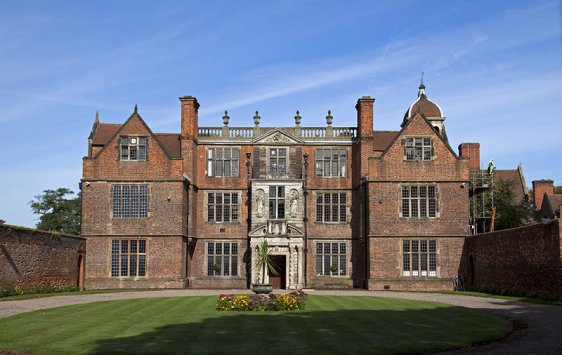 High Street, Solihull, West Midlands, England, with St Alphege's Church in the background: Source: https://commons.wikimedia.org/wiki/File:Solihull_High_Street.jpg
High Street, Solihull, West Midlands, England, with St Alphege's Church in the background: Source: https://commons.wikimedia.org/wiki/File:Solihull_High_Street.jpgAuthor: Velela

Solihull is a town in the West Midlands of England. Located aboutn15 km (9 mi) from downtown Birmingham, it has a population of around 100,000 people (2012 estimate). It is the principal town within the Metropolitan Borough of Solihull, which has a population of about 210,000 people.
Solihull was established over a thousand years ago, around the Anglo-Saxon period, when the forest was cleared for a place to trade. The settlement evolved into a medieval market town, remaining one till the 20th century. Even when the Industrial Revolution caused nearby Birmingham to expand rapidly, Solihull remained somewhere unaffected.
At the start of the 20th century, the population of Solihull stood at only 7,500 people. It only began to grow in the post World War II period, when the rebuilding and slum clearance of Birmingham caused a spillover effect for development to reach it.
Solihull only began to modernize in the 1960s. Until then, the High Street would appear unchanged from the late 19th century. Since then, a modern open-air shopping mall called Mell Square was built. Today Solihull is home to a production plant for Land Rover as well as the location for the National Exhibition Centre. Much of Birmingham Airport and Birmingham Business Park are also within Solihull.
 Castle Bromwich Hall, Solihull: Source: https://commons.wikimedia.org/wiki/File:Castle_Bromwich_Hall.jpg
Castle Bromwich Hall, Solihull: Source: https://commons.wikimedia.org/wiki/File:Castle_Bromwich_Hall.jpgAuthor: Tony Hisgett

Visiting Solihull
From London, take the M40 motorway until it meets the M42 motorway. Take the northern fork of the M42. At Junction 5, exit the M42 heading north on the A41 (Solihull By-Pass) to reach the town.Places of Interest in Solihull
- Babbs Mill: 24 hectares of mixed grassland, lake and woodlands designated in 2000.
- Castle Bromwich Hall: Jacobean Mansion built between 1557 and 1585 by Sir Edward Devereux.
- Dorridge Wood: Semi-natural woodland covering 7.5 hectares, designated in 2000.
- Elmdon Park: Walled garden covering 4.6 hectares at Elmdon Manor, managed by Warwickshire Wildlife Trust, designated in 1995.
- Palmers Rough: Semi natural woodland covering 6.5 hectares designated in 2000.
- Malvern & Brueton Park: Mixed grassland, woodland and marsh covering 30 hectares designated in 2002.
- St Alphege's Church, Solihull: Anglican parish church dating to medieval period. It was named in honor of St Alphege, who was martyred in 1012.
- Yorks Wood: Semi natural ancient woodland covering 10 hectares designated in 1991.
 Latest updates on Penang Travel Tips
Latest updates on Penang Travel Tips

Copyright © 2003-2025 Timothy Tye. All Rights Reserved.

 Go Back
Go Back